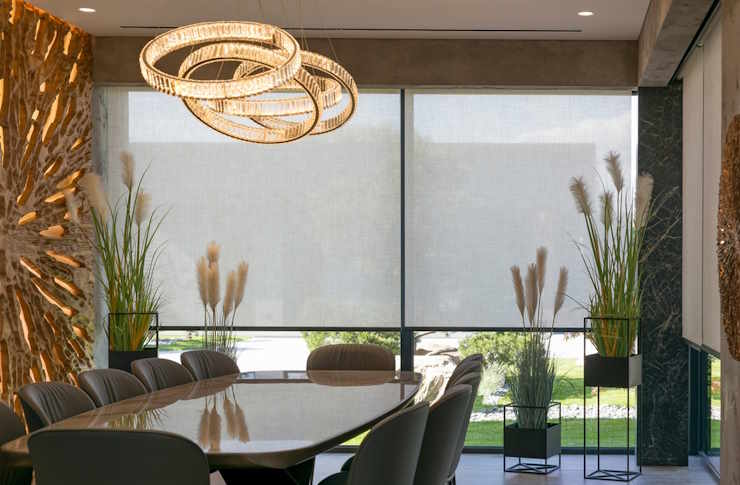Transforming Dining Spaces: The Rise of Statement Lighting
The dining room, once a formal space reserved for special occasions, has evolved into a multifunctional hub for daily life, entertainment, and culinary exploration. As homeowners seek to create inviting and visually striking dining areas, one element has emerged as a powerful tool for transformation: statement lighting. This trend has captivated interior designers and homeowners alike, offering a way to infuse personality, drama, and ambiance into dining spaces of all sizes and styles.

The Historical Journey of Dining Room Lighting
Dining room lighting has come a long way since the days of candlelit feasts in medieval great halls. The advent of electricity in the late 19th century revolutionized home illumination, paving the way for more elaborate and functional lighting designs. Early electric chandeliers often mimicked their candle-bearing predecessors, but as the 20th century progressed, lighting fixtures began to reflect changing architectural and design movements.
From the ornate crystal chandeliers of the Victorian era to the sleek, minimalist pendants of mid-century modern design, dining room lighting has continuously adapted to reflect broader cultural and aesthetic shifts. The 21st century has seen a renewed focus on lighting as a key design element, with statement pieces taking center stage in dining room decor.
The Power of Focal Point Lighting
Statement lighting serves as more than just a source of illumination; it acts as a focal point that can define the entire character of a dining space. A well-chosen fixture can tie together disparate design elements, create visual interest in an otherwise plain room, or add a touch of luxury to a modest setting.
Designers often recommend selecting the dining room light fixture early in the design process, allowing it to inform other decor choices. The scale, style, and placement of a statement light can influence everything from table size and shape to wall colors and artwork selections.
Choosing the Right Statement Piece
Selecting the perfect statement lighting for a dining room requires careful consideration of several factors:
-
Scale: The fixture should be proportionate to the room and table size. A general rule of thumb is that the diameter of a chandelier or pendant should be about one-half to two-thirds the width of the dining table.
-
Height: Proper hanging height is crucial for both aesthetics and functionality. Typically, the bottom of the fixture should hang 30-36 inches above the table surface for an 8-foot ceiling, with an additional 3 inches for each foot of ceiling height above that.
-
Style: The lighting should complement the overall design aesthetic of the room while still making a statement. This could mean choosing a fixture that contrasts with the decor for a bold look or one that elevates existing design elements.
-
Functionality: While aesthetics are important, the primary function of dining room lighting is to illuminate the space effectively. Consider fixtures with adjustable brightness or multiple light sources to accommodate different dining scenarios.
Emerging Trends in Statement Lighting
As the popularity of statement lighting continues to grow, several exciting trends have emerged:
-
Sculptural Forms: Lighting fixtures that double as art pieces are increasingly popular. These sculptural designs range from abstract shapes to nature-inspired forms, adding visual interest even when not illuminated.
-
Mixed Materials: Designers are experimenting with unexpected material combinations, such as glass and wood, metal and fabric, or even incorporating elements like rope or paper into lighting designs.
-
Sustainable and Natural Materials: Eco-conscious consumers are driving demand for fixtures made from sustainable or recycled materials. Bamboo, rattan, and recycled glass are becoming common in statement lighting designs.
-
Smart Lighting: Integration of smart home technology allows for customizable lighting experiences, with adjustable color temperatures and intensity controlled via smartphone apps or voice commands.
-
Cluster Installations: Multiple smaller pendants grouped together create a dramatic effect while offering flexibility in terms of coverage and design impact.
The Impact of Statement Lighting on Home Value
While the primary goal of statement lighting is to enhance the aesthetics and functionality of a dining space, it can also have a positive impact on home value. Real estate professionals often cite updated lighting as a key factor in improving a home’s marketability and perceived value.
A well-chosen statement light fixture can create a memorable impression during home viewings, potentially setting a property apart in a competitive market. However, it’s important to strike a balance between personal style and broad appeal when selecting fixtures with resale in mind.
Challenges and Considerations
Despite its many benefits, incorporating statement lighting into dining room design is not without challenges. Some common issues include:
-
Overwhelming small spaces: In compact dining areas, an overly large or elaborate fixture can make the room feel cramped.
-
Balancing form and function: Striking the right balance between aesthetic impact and practical lighting needs can be tricky.
-
Installation complexities: Some statement pieces may require professional installation or structural reinforcement, adding to the overall cost.
-
Changing trends: While statement lighting can be a powerful design tool, highly trendy pieces may quickly become dated, necessitating future updates.
The Future of Dining Room Lighting
As technology advances and design preferences evolve, the future of dining room lighting looks bright and innovative. We can expect to see further integration of smart technology, more sustainable and energy-efficient options, and continued experimentation with forms and materials.
The trend towards multifunctional spaces may also influence lighting design, with fixtures that can adapt to different uses of the dining area throughout the day. Additionally, the growing interest in personalization and unique, artisanal pieces suggests that statement lighting will continue to play a crucial role in expressing individual style and creating memorable dining experiences.
In conclusion, statement lighting has emerged as a powerful tool for transforming dining spaces, offering a perfect blend of form and function. By carefully selecting and incorporating the right fixture, homeowners can create a dining area that not only meets their practical needs but also serves as a stunning expression of personal style and design vision.






